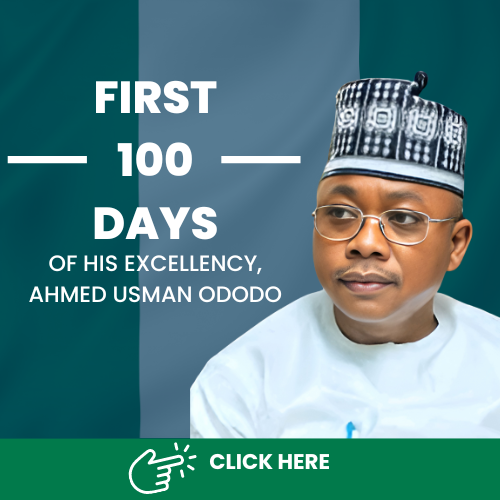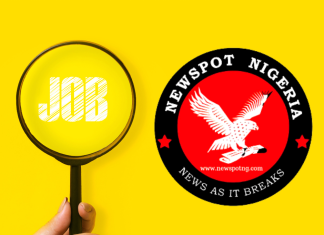By Dada Olusegun
project is undoubtedly Nigeria’s most ambitious transport infrastructure project since independence. In terms of scope, distance covered, and connectivity, not even the 3rd Mainland Bridge in Lagos, the 2nd Niger Bridge in Onitsha/Asaba, or the Abuja-Kano expressway comes close. It is simply a world-class iconic project.
Before I go further, I want us to take a brief trip back to history. The idea for a major coastal federal road in Nigeria was first conceptualized in 1955 by the then Federal Commissioner of Finance, Late Chief Festus Okotie-Eboh, who hails from present-day Delta State. Okotie-Eboh proposed the development of a network of rail and road routes from Lokoja-Benin City-Koko-Warri-Onitsha to aid the movement of goods. Specifically, he proposed the Koko-Ogheye-Epe dual carriageway project that was to traverse Delta and Ondo states and terminate at Epe in Lagos. This road is basically meant to hug the coastal areas of Delta and Ondo states and shorten travel distance between Lagos and the Niger Delta and the rest of the Eastern region. The project did not take off in the first Republic.
During the administration of Olusegun Obasanjo as civilian president, he elected to commence construction of a variant of the coastal road from Warri in Delta State to Calabar. This was what came to be known as the East-West road. In 2010, however, the government of President Goodluck Jonathan through NDDC also awarded the Koko-Ogheye-Epe road to Levant Construction Ltd. The Lagos State government on its part during the administration of then-Governor Bola Tinubu was also independently planning to build a coastal road that will span the entire Lekki-Epe axis, which it foresaw as the next major economic frontier in Lagos and the country. Thirteen years later, the chief visionary of that Lagos coastal road is now Nigeria’s President. President Tinubu then decided to marry his Lagos coastal road vision with that of Okotie-Eboh’s Koko-Ogheye-Epe coastal road vision in addition to the thinking behind the East-West road to come up with a variant of the Lagos-Calabar coastal road that we have now.
What is the Lagos-Calabar Coastal Road Project?
This is simply a 700km mega-highway that starts from Victoria Island in Lagos and ends in Calabar, Cross River State. It will pass through Ogun, Ondo, Delta, Bayelsa, Rivers, and Akwa Ibom states before terminating at Calabar. This coastal highway is the first of its kind in the world. First and foremost, it comprises a 10-lane boulevard with five lanes on each side of the dual carriageway and a standard gauge train track in the middle. Concrete pavement technology is to be adopted in the construction of the entire stretch of the road.
The Lagos-Calabar coastal road has two major spurs. First is the 1000km Badagry-Sokoto road, which will connect the South West to the North Central and the North West through the shortest route possible, terminating at Sokoto. The second spur is the Enugu-Abakaliki-Ogoja road going to Cameroon, which essentially connects the South East to the coastal road. This spur continues from Enugu to Oturkpo to Nasarawa to Apo in Abuja. Essentially, the Lagos-Calabar coastal road is an arterial road that connects the six geopolitical zones.
Synopsis of the Funding for the Coastal Road Project
The total estimated cost of the 700km Lagos-Calabar Coastal road project is put at N15.6 trillion. The funding model for the Lagos-Calabar coastal road project is EPC+ (Engineering, Procurement, Construction, and Financing) where the federal government would put up a counterpart financing of around 30% while the contractor funds the remainder. Last October, FEC approved the EPC+ model for this project in favor of Hitech Construction company. Going by the estimated N15.6 trillion cost for the entire coastal road stretch, the federal government’s counterpart fund is around N4.68 trillion. The federal government, in a bid to hasten the commencement of the project, decided to finance construction of the first 47km in phase 1 of the road project, which runs from Ahmadu Bello Way, Victoria Island to the Lekki Deep Sea port. The contract sum of N1.06 trillion was awarded for this section by FEC to Hitech, and construction is ongoing with unprecedented speed. Whatever funding FG is providing for this section of the road will come under the FG’s counterpart fund. I must emphasize that this funding model adopted by the Tinubu administration is the best model possible, considering the country’s revenue size. This is a monumental infra project being majorly funded with private finance. This is possible because the coastal road is extremely viable.
Benefits of the Coastal Road
Most of the unnecessary controversies that have been amplified by some people over this coastal road project have centered on demolition of structures along the path of the road, as well as misconceptions about the funding model, with critics of the project having an erroneous impression that the federal government would fund the entire project. Little attention has been paid to the staggering benefits that the Lagos-Calabar coastal road would bring about. I want to briefly lay them out now.
– Job Creation: Critics talk about exaggerated job losses that may be witnessed as a result of demolition of structures on the coastal road’s right of way, especially in Lagos, but few pause for a moment to look at the immense amount of new jobs that this massive project will create, both directly and indirectly. Already, the project has started creating thousands of direct and indirect jobs courtesy of the actual construction work currently ongoing at multiple sections of the 47km stretch. The workers that would be part of this project are not ghosts; they are Nigerians. The construction of the railway component of this coastal road is another source of massive job creation. Hundreds of permanent jobs will also be required after completion of construction, as people would be engaged to carry out toll management, road maintenance, etc. New industries, filling stations, CNG stations, auto-mechanic workshops, shopping malls, hotels, etc., will dot the iconic coastal road axis while creating many jobs in the process. This is one of the direct effects of having that road.
– GDP Growth: The Lagos-Calabar coastal project is a very important project with unparalleled economic value. This is a road that connects Nigeria’s biggest economic zone, Lekki Free Trade Zone housing the Dangote refinery, Lekki Deep sea port, and many existing and potential industries to the rest of the south and the north via a 10-lane dual carriageway. The potential impact of this road on our GDP growth is huge, considering the fact that it will facilitate an increase in economic activity as well as improve ease of movement of goods and people and invariably ease of doing business. Like I mentioned earlier, the road will drastically cut down travel time between Lagos to the South-South and South-East to less than six hours through an alternative shorter route and open new corridors of development. With the 1000km spur from Badagry in the Atlantic coast to Sokoto on the edge of the Sahel, we would also have a North-South modern highway that smoothens land transport, connectivity, and trade between the north and south. As a growing nation that keeps expanding, it doesn’t make sense to limit ourselves to existing roads (which are equally getting massive attention by the Renewed Hope administration). We need to plan for the future. When the 3rd Mainland bridge was being conceptualized, many back then argued that it was not necessary or not a priority since there were already two bridges connecting the Lagos island to the mainland, but look at the importance of the bridge today. In fact, the Lagos State government has approved the design for the 4th mainland bridge – a more ambitious undertaking. That’s grand vision!
– Tourism: One of the most regurgitated lines by critics of the Lagos-Calabar coastal road project is that it would kill tourism (especially along the existing coastline in Lagos) and destroy our beaches (also especially in Lagos). How wrong they are! Contrary to this false insinuation, the most immediate impact of the new Lagos-Calabar coastal road is definitely going to be a massive boost in tourism. This is not even debatable. Every known major coastal road across the world is always a magnet for tourism. The Lagos-Calabar coastal road, which will be one of the best coastal roads in the world upon completion, cannot be an exception. The coastal road is not going to run exclusively on the coastline. For example, around the Eleko axis, the road alignment is not on the beach front. Even in the landmark and Oniru beach axis, after construction of the coastal road, the tourism value of these areas would skyrocket. It simply requires innovation by players in the tourism industry to make the most out of the coastal road. In fact, there are countless beaches along the path of the coastal road in Lagos, Ondo, Bayelsa, Rivers, and Akwa Ibom that can become Nigeria’s top tourist destinations. The Ilashe Island beach off the Lagos coast along the Badagry Creek with its beautifully arranged coconut trees and crystal white sand is one of such that can benefit from the Badagry spur. The Ibeno beach in Akwa Ibom, which is the longest sand beach in West Africa and stretching for about 30 kilometers from Ibeno to James Town along the Atlantic coastline of Akwa Ibom State, is yet another tourism goldmine that the coastal road can trigger its extraction. It will only take innovative thinking and belief. Sadly, many of our compatriots are instead exuding pessimism and pedestrian thinking with their opposition to this grand project.
As I conclude, I want to state that the hallmark of extraordinary leadership is having the vision and conviction that a dream can be achieved. A leader inspires the power and energy to get things done. He has a poorly developed sense of fear and overlooks the concept of the odds against him. His focus is not usually on the present nor on the obstacles that may stand in the way of his vision but on how to attain that vision by surmounting the obstacles. While many critics of the colossal Lagos-Calabar coastal road are busy extrapolating how many decades it may take to complete the project using other existing roads of different models to judge or how the funding will come, President Bola Ahmed Tinubu is looking at the various pathways that will deliver the project. On the evidence of the pace of construction on the project sites, it is obvious that he has found many pathways. President Bola Tinubu is a visionary. He creates the vision of the future. He sees what others do not readily see, which is why people usually criticize his vision at the onset and later turn to embrace or even copy them. This is one of such times.
The birth of a modern Nigeria has begun with President Tinubu in charge and I have only one admonition for our dear compatriots who are still skeptical about this journey; Leave the talk, let’s face the business!
Share your story or advertise with us: Whatsapp: +2347068606071 Email: info@newspotng.com














